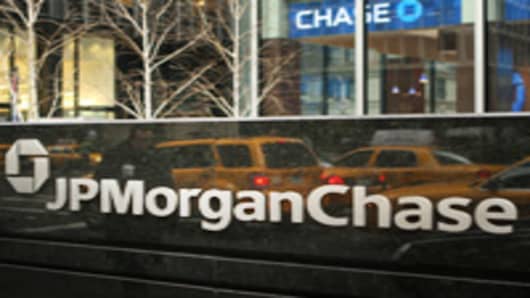The analyst said that “overall, management’s tone was positive regarding the company’s strategic positioning and the ability to earn good returns in a choppy environment.” The investment bank is making major investments in technology, “particularly given the complexity and globalization of the industry, with the IT improvements expected to “yield more advanced, efficient, and safer trading systems,” as well as “cost saves at about $300 million per annum.”
While JPMorgan’s second-quarter core trading revenue declined 30 percent from the first quarter, peer banks saw a 39 percent decline on average, according to Orenbuch, who said that JPMorgan attributed its better performance “to the strength and diversification of their franchise and benefits of recent investments.”
JPMorgan’s management also indicated that although “the euro zone crisis will likely affect results over the next few quarters and if there were to be a positive surprise, management believes it would be from a sooner than expected recovery in the U.S.”
The three main growth strategies for JPMorgan’s investment bank include international growth, with “measured investments in Asia, although the revenue environment remains challenging in the region,” growth “in several (Latin American) countries ... with local currency capabilities in Brazil”; physical commodities trading, where “JPM is the largest player,” and improvement in trading technology.
Orenbuch said that JPMorgan expects the technology improvements to reduce the number of trading systems used by the investment bank from eight to two, with the unit reducing its headcount by “700+.”
The analyst also said that JPMorgan remained committed to the universal banking model, in the “belief that it lowers risk and adds to shareholder value,” since “volatility of revenues is lower attributable to their economies of scale,” and because the company’s “broader distribution” gives it the ability “to invest in growth more consistently than peers who are more narrowly focused.”
JPMorgan’s shares closed at $37.01, returning 14 percent year-to-date, following a 20-percent decline during 2011. The shares are down 9 percent since closing at $40.74 on May 10, when CEO James Dimon estimated $2 billion in trading losses from hedging activity by the company’s Chief Investment Office. While the CIO’s second-quarter trading losses ended up totaling $4.4 billion, JPMorgan reported second-quarter earnings of $5 billion, and Dimon said the company had “significantly reduced the total synthetic credit risk in CIO,” and that “hopefully, if all goes well, we can start buying back stock early in the fourth quarter.”
The shares trade for 1.1 times tangible book value, according to Thomson Reuters Bank Insight, and for seven times the consensus 2013 earnings estimate of $5.21 a share, among analysts polled by Thomson Reuters. The consensus 2012 earnings per share estimate is $4.66.
—By TheStreet.com’s Philip van Doorn
Additional News: Who Will Replace Jamie Dimon?
Additional Views: Deutsche Bank Downgrades JPMorgan
____________________________
CNBC Data Pages:
____________________________
Disclosures:
TheStreet’s editorial policy prohibits staff editors, reporters, and analysts from holding positions in any individual stocks.
Disclaimer


